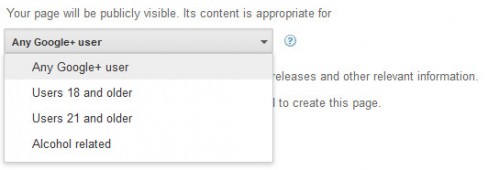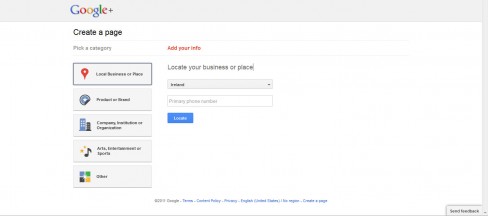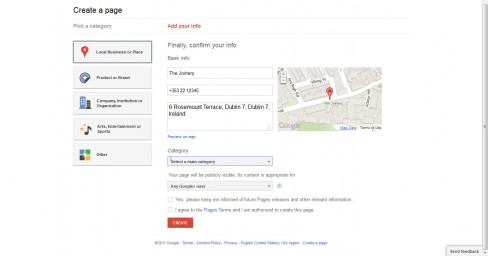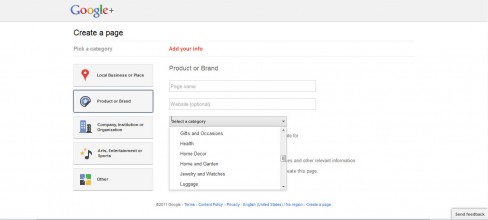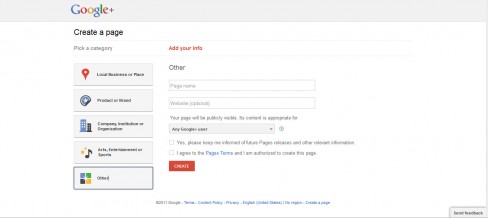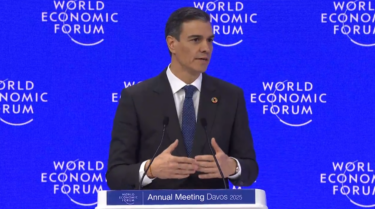Google+ Pages for brands has gone live but while most of us can’t sign up us just yet (at the time of writing), we have been able to see what the sign process will be like. And as with everything with Google+, it looks slick and easy.
First off, one of the most notable options in the G+ Pages sign up process is that brands will be able to restrict who can see their pages according to age. Creators of Google+ brand pages can also state if their page is alcohol related.
According to Google this age restriction will not prevent public content from being seen by younger users but will mean that users who are logged in and below the age will be prevented from seeing some content.
When you set up your page and choose an age category, interactive features that require the user to be logged in will be limited to users that are that minimum age or older. Keep in mind that all pages are public and using the age selector does not affect visibility of the page or content. Make sure that you choose a minimum age category selection that’s appropriate for your page.
So, what can you create?
Google+ allows you to create pages according to five broad categories;
- Local businesses and places
- Products or brands
- Company, institutions or organisations
- Arts, entertainment or sports, and
- Other
While the sign up process is mostly the same, setting up a Google+ Page for a place or local business has a few differences.
Google+ uses your phone number to find where your business or place is located (You can then refine the location using Google Maps)
The set up for the other categories is the same. Google asks for your name, website (optional) and sub-category. There are dozens of sub-categories; for brands and companies you can pick between “Aerospace and Defence,” to “Baby and Kids” and even “Luggage” along with others.
If you are setting up an Arts, Entertainment, or Sports page you can pick between, “album”, “blog”, “awards show”, “fictional character”, “movie”, “newspaper”, “song”, “TV show”, “TV channel”, “playlist” with others.
What is interesting about these options is that Google is allowing pages to be created for what could be called short term events; a Google+ page for a playlist is likely to get less activity over the long term than that for a band or company (although this hints at some Google Music integration).
The only exception is for signing up is if you are creating an “Other” page. These pages don’t have a sub-category option.
What is striking about the sign up process is how few questions there are, although I imagine it will be difficult for some users to decide between categories for their page (e.g. website or blog).




